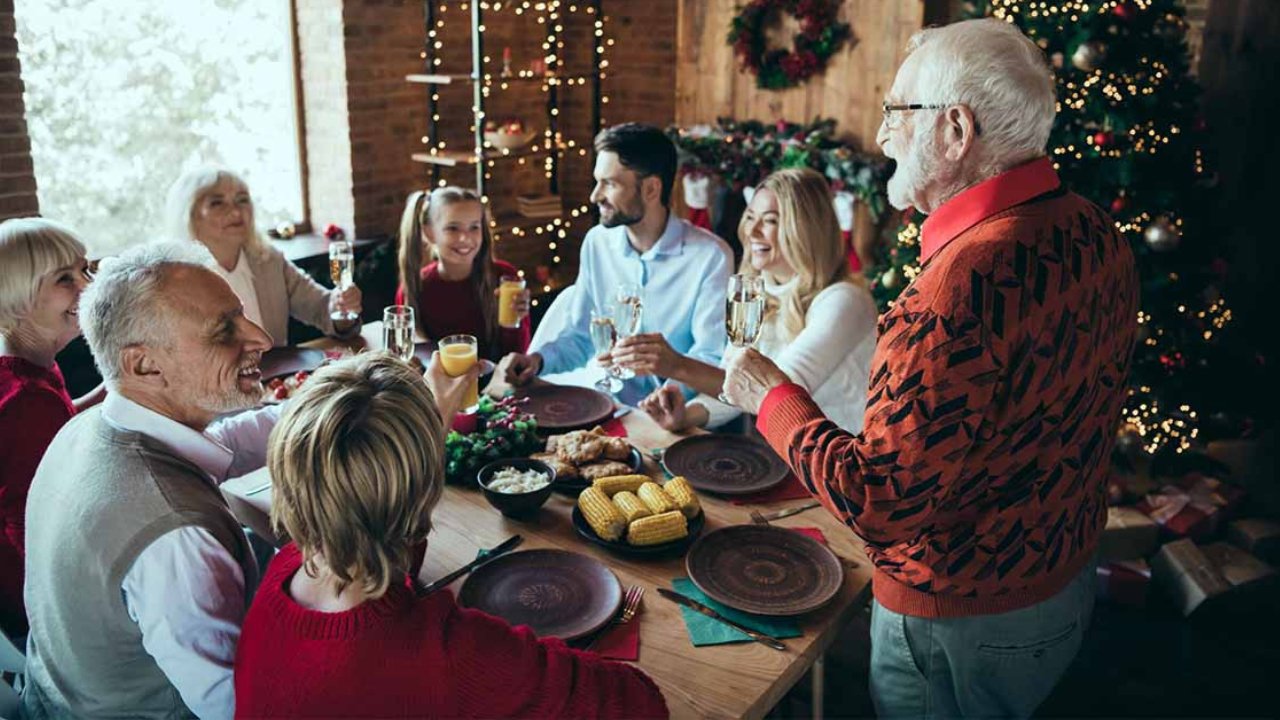Christmas Day. The origins of Christmas Day can be traced back to ancient pagan festivals that celebrated the winter solstice. Various cultures marked this time of year with festivities that honored the return of longer days and light. One such celebration was Yule, observed by Germanic peoples, which included feasting, lighting fires, and decorating with greenery.
As the Roman Empire expanded, it adopted and adapted various pagan traditions. The festival of Saturnalia, celebrated in December, saw Romans engaging in revelry, gift-giving, and communal feasts. The early Christians, seeking to replace these widespread pagan celebrations, chose December 25th to commemorate the birth of Jesus Christ. This strategic decision allowed them to promote Christianity while also embracing existing traditions more palatable to the populace.
Christmas Traditions Around the World
Christmas is a celebration that transcends borders and cultures, with each country incorporating its unique customs and traditions into the festivities. In Sweden, for instance, the holiday season kicks off with the feast of Santa Lucia on December 13. This event honors the patron saint of light, characterized by candlelight processions led by a girl dressed in white robes, symbolizing hope and the return of light during the dark winter months. Traditional foods such as saffron buns and gingerbread cookies are also integral to this celebration.
Moving to Mexico, the celebration of Christmas blends Catholic traditions with indigenous customs. The “Las Posadas” reenactment occurs from December 16 to 24, where families reenact Mary and Joseph’s search for shelter, visiting homes in a festive procession. Each evening culminates in festive gatherings filled with traditional foods, including tamales and bacalao, a salted cod dish, and piñatas filled with fruits, candies, and small toys, symbolizing the joy and spirit of giving.
In the United States, Christmas reflects a variety of cultural influences, primarily those of European origins. Families often adorn their homes with elaborate light displays and evergreen decorations, while energy-filled gatherings feature holiday music and the sharing of special meals. The iconic Christmas tree, a tradition with roots in Germany, has become a central element in American homes. People come together to enjoy dishes like roasted turkey, ham, and pumpkin pie, along with a delicious assortment of cookies and sweets, keeping the spirit of sharing and community alive during this cherished holiday.
In the United Kingdom, Christmas Day is marked by iconic traditions such as the Christmas dinner, which typically includes turkey, stuffing, and Christmas pudding. Families gather to exchange gifts after attending church services, with a focus on community and gratitude. The character of Father Christmas, an ancestor of today’s Santa Claus, plays a pivotal role in spreading joy and merriment. These diverse traditions collectively celebrate the essence of Christmas, highlighting a rich spectrum of cultural practices that bring people together in universal harmony.
The Importance of Family Gatherings on Christmas Day

Christmas Day serves as a pivotal occasion for family gatherings, providing an invaluable opportunity to reinforce the bonds that unite loved ones. During this festive season, families come together to celebrate not only the holiday itself but also the relationships that enrich their lives. The act of gathering fosters a sense of togetherness, love, and gratitude, elements that are integral to the spirit of Christmas.
One of the highlights of Christmas gatherings is the shared meals that bring everyone to the table. Food has a unique ability to create connections and evoke nostalgia, with traditional dishes often serving as a reminder of family history and culture. Sharing a meal allows family members to engage in conversation, exchange stories, and create new memories that will be cherished for years to come. The act of breaking bread together enhances the feeling of unity and reinforces the significance of spending time with loved ones.
Additionally, the custom of exchanging gifts during Christmas is much more than a mere transactional action; it symbolizes appreciation and thoughtfulness. Thoughtfully selected gifts can express sentiments that words alone cannot convey, reinforcing the bond of affection between family members. The joy of giving and receiving gifts also contributes to a festive atmosphere that uplifts spirits and strengthens family ties.
Creating memories is an essential aspect of Christmas gatherings. Whether it be through shared laughter, heartfelt conversations, or engaging in holiday traditions, these experiences become the fabric of family identity. Capturing these moments through photographs or simply recounting them long after the day has passed ensures that the essence of Christmas remains alive in the hearts of all involved. The importance of family gatherings on Christmas Day cannot be overstated; they are fundamental to nurturing the love, gratitude, and togetherness that define the holiday season.
Gift Giving: The Heart of Christmas Spirit

Gift-giving is a cherished tradition that lies at the heart of the Christmas spirit, symbolizing love, generosity, and connection among loved ones. Rooted in history, this practice has evolved over centuries, drawing inspiration from the biblical account of the Magi, who presented gifts to the newborn Jesus. This act of kindness set a precedent for exchanging gifts during the festive season, reinforcing the importance of sharing joy and goodwill.
During Christmas, thoughtful gifts transform the holiday into a personal and intimate celebration. The essence of gift-giving is not merely to exchange material items but to express sentiments of appreciation and affection. It’s a reminder of the bond shared between individuals and the thoughtfulness behind each present. As such, finding the right gift requires consideration and understanding of the recipient’s personality and preferences.
When selecting gifts, popular ideas often include items that cater to personal interests, hobbies, or sacred memories. Handmade crafts or experiences, such as tickets to a concert or a cooking class, are increasingly appreciated. Practical gifts, such as kitchen gadgets or cozy apparel, can also be tremendously valued, as they enhance everyday life. Additionally, the trend of giving gifts that align with sustainability and ethical consumption has risen in recent years, allowing individuals to contribute positively to the environment while demonstrating thoughtfulness.
To ensure that your gifts resonate with the recipient, consider incorporating personal elements. Curating a gift basket filled with their favorite treats, or writing a heartfelt note expressing your appreciation can create a meaningful connection. Ultimately, the act of giving embodies the spirit of Christmas and fosters an atmosphere of warmth and joy among family and friends.
The Role of Decorations and Christmas Atmosphere
Christmas decorations play a crucial role in establishing a festive atmosphere, transforming ordinary spaces into magical settings filled with joy and warmth. Families often engage in decorating their homes as a cherished tradition that marks the onset of the holiday season. Popular decoration themes vary widely, ranging from traditional motifs that highlight red and green hues, to elegant and modern interpretations featuring silver, gold, and white. These different themes allow families to express their unique personalities and create a distinctive ambiance that resonates with their beliefs and values.
Lights are one of the most significant elements of Christmas decorations, contributing not only to the aesthetic appeal but also to the overall mood of celebration. The soft glow of twinkling fairy lights adorning trees and windows creates a serene and inviting environment. In addition, the placement of lights can evoke a sense of nostalgia, reminiscent of Christmases past. Families often take great care in selecting the type of lights they use, whether they prefer classic incandescent bulbs or modern LED options, to curate a specific atmosphere that reflects their style.
The Christmas tree is another focal point of holiday decor. Its decoration often involves collaboration among family members, each contributing their favorite ornaments, symbols, and memories. This collective effort not only enhances the beauty of the tree but also fortifies family bonds, as each ornament has its own story. Additionally, other decorations like wreaths, garlands, and festive table centerpieces can further enhance the overall Christmas aesthetic, infusing the home with a sense of cheer and celebration.
Ultimately, the combination of lights, ornaments, and personalized decorations culminates in an enchanting Christmas atmosphere that invites joy and togetherness. By incorporating these elements, families create not just a festive environment, but also lasting memories that define their holiday celebrations for years to come.
Christmas Music and Movies that Define the Season

As the air turns crisp and festive decorations adorn homes, the magic of Christmas comes alive through the enchanting melodies and heartwarming films that define the holiday season. Christmas music has long been an integral part of the celebrations, creating an atmosphere of joy and nostalgia. Classic holiday songs such as “Silent Night,” “Jingle Bells,” and “White Christmas” have not only become staples during this time of year but also evoke cherished memories of gatherings with family and friends. The timeless nature of these tunes serves to unite generations, transcending cultural boundaries and reminding us of the universal joys associated with the season.
In addition to music, Christmas movies play a pivotal role in shaping our holiday traditions. Films like “It’s a Wonderful Life,” “A Christmas Carol,” and “Home Alone” have become synonymous with Christmas, providing both entertainment and valuable lessons about kindness, love, and the spirit of giving. The tradition of gathering around the television for a holiday movie marathon fosters a sense of community, inviting viewers to share laughter and tears with loved ones. Streaming platforms have made it easier than ever to access these beloved films, allowing families to revisit classic titles year after year.
The impact of Christmas music and films extends beyond mere entertainment; they foster a shared emotional experience that enriches the holiday spirit. Many people find themselves singing along to their favorite carols or quoting lines from iconic movies during festive gatherings. These songs and films encourage the tradition of storytelling and memory-making, reminding us of the values that underpin the season. As the world embraces the spirit of Christmas, music and cinema remain central to the celebrations, ensuring that the joy and magic of Christmas Day are experienced by all.
Christmas Food and Traditions: A Culinary Journey
The celebration of Christmas is rich with traditions, particularly when it comes to the culinary delights that accompany this festive season. Across various cultures, specific foods have become synonymous with Christmas, symbolizing not only festivities but also a deep sense of togetherness. The traditional meals served during Christmas gatherings often reflect regional customs and seasonal ingredients.
In many parts of the world, roast meat takes center stage. In the United States, a beautifully roasted turkey is quite common, served alongside stuffing, cranberry sauce, and various sides that are often passed down through generations. Meanwhile, in countries like the United Kingdom, a traditional Christmas dinner consists of roast turkey or goose, complemented by Yorkshire pudding, gravy, and an abundance of vegetables such as Brussels sprouts and carrots. These culinary practices underscore the importance of family traditions, uniting individuals around a communal table.
Regional delicacies also play a vital role in Christmas meals. For instance, in Italy, the Feast of the Seven Fishes is celebrated on Christmas Eve, consisting of multiple seafood dishes that honor the Italian heritage. Similarly, in Mexico, a festive meal might include tamales and pozole, showcasing the country’s rich flavors and communal eating customs. These unique traditions are often rooted in local practices and serve to remind us of the cultural diversity present during the holiday season.
Moreover, desserts are an integral part of Christmas celebrations, with each culture boasting its own favorites. The German Stollen and the British Christmas pudding symbolize a sweet end to the festive meal, embodying the spirit of generosity and goodwill. Sharing these meals fosters connections among families and friends, emphasizing the notion that food is not merely sustenance, but a means of cultural expression and bonding. As Christmas approaches, individuals around the world find joy in preparing and sharing these culinary offerings, continuing traditions that bring people together during this special time.
Acts of Kindness and Charity During the Holidays

The holiday season, particularly Christmas, is a time when the spirit of giving illuminates communities, igniting a powerful wave of kindness and charity. This period encourages individuals to engage in acts of goodwill, fostering a sense of unity and collective responsibility. Many people harness the festive spirit, focused on not only celebrating with loved ones but also extending compassion to those who are less fortunate.
Across various regions, communities organize efforts to collect food, clothing, and monetary donations for local shelters, food banks, and families in need. These initiatives, often spearheaded by local organizations, schools, and faith-based groups, play a crucial role in alleviating the hardships faced by vulnerable populations. For instance, annual toy drives bring joy to children who might otherwise go without gifts, while community dinners provide warm meals to those experiencing homelessness or housing instability.
Moreover, volunteering during the holiday season has become a cherished tradition for countless individuals and families. Many choose to serve meals at shelters, participate in outreach programs, or organize community events aimed at fostering connections between those who have and those who are struggling. Such charitable acts not only benefit the receivers but also enrich the lives of the givers, promoting empathy and a deeper appreciation for the community’s interconnectedness.
In addition, acts of kindness throughout the Christmas season can take many forms, from a simple smile to monetary donations, showing that generosity can manifest in both large and small ways. The holidays highlight the importance of uplifting others, ensuring that the spirit of Christmas transcends mere gift-giving and becomes a symbol of hope and renewal. Ultimately, these charitable activities not only have a significant impact on individual lives but also strengthen the foundations of society, reminding us all of the joy that comes from giving back.
Embracing the True Meaning of Christmas
The Christmas season, often characterized by vibrant festivities, elaborate decorations, and joyous gatherings, holds a significance that transcends mere celebration. At its core, Christmas embodies themes of love, hope, and compassion, inviting individuals to reflect on their values and actions during this special time of year. While the trappings of the holiday are undeniably delightful, it is essential to delve into the deeper meaning of Christmas and how it can manifest in our daily lives.
Christmas serves as a poignant reminder of the importance of love—love for family, friends, and even strangers. In many cultures, the act of giving during this season symbolizes the selfless nature of love. This year, consider extending kindness beyond traditional gift exchanges. Small gestures, such as volunteering at local shelters or supporting those in need, can create a ripple effect of compassion in the community. By acting with empathy, individuals can embody the true spirit of the season, fostering a sense of belonging and togetherness.
Hope is another foundational theme of Christmas, representing the belief in a better future. This season calls for optimism and resilience, encouraging individuals to reflect on their aspirations for themselves and their communities. It is a time to spread hope, reminding others that even during challenging times, joy can be found and shared. Engaging in conversations that uplift and inspire others can significantly impact the atmosphere of the holiday season, making it more meaningful for everyone involved.
In integrating these principles into our lives, we enrich not only our personal experiences but also those of the people around us. By embracing the true meaning of Christmas, we can transform this festive occasion into an extraordinary opportunity for growth, connection, and communal joy. Reflecting on these values enables us to keep the spirit of the season alive long after the decorations are taken down.
Conclusion
Christmas Day is a cherished occasion that brings people together to celebrate love, generosity, and the spirit of giving. It’s a time for families and friends to create lasting memories, share delicious meals, and exchange thoughtful gifts. Beyond the festive decorations and joyful gatherings, Christmas serves as a reminder of the values of compassion and community.
If you have any questions or concerns about our Article, please reach out to our support team. We’re here to help you!










I do agree with all the ideas you’ve introduced for your post. They are very convincing and will certainly work. Still, the posts are too quick for novices. May just you please extend them a bit from next time? Thanks for the post.
An impressive share, I just given this onto a colleague who was doing somewhat evaluation on this. And he in reality purchased me breakfast as a result of I found it for him.. smile. So let me reword that: Thnx for the treat! But yeah Thnkx for spending the time to discuss this, I really feel strongly about it and love studying extra on this topic. If potential, as you develop into experience, would you mind updating your weblog with extra particulars? It’s extremely useful for me. Huge thumb up for this blog submit!
I have been absent for a while, but now I remember why I used to love this site. Thanks , I’ll try and check back more often. How frequently you update your web site?